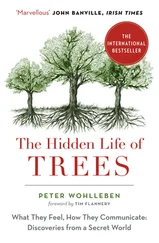Questions for discussion
1 Suggest two moral maxims which would give rise to contradictory actions. How might the differences between these be resolved?
2 Could it ever be morally right, according to Kant, to torture one person in order to get information which would save the lives of a large group?
3 Describe the difference between a hypothetical and a categorical imperative. On what grounds might someone reject an imperative that was claimed to be categorical?
4 On Kant’s view, should the moral principles of intelligent green spiders differ from the moral principles of human beings?
5 What place does God have in Kant’s moral philosophy?
6 In Kant’s view, is saving the life of a child a morally good action? What are the difficulties from his viewpoint in answering this question in the affirmative?
SIX
Bentham and Mill – Utilitarianism
Utilitarianism is generally thought of as a moral theory which can best be summed up by the phrase: ‘the greatest happiness for the greatest number’. However, in terms of its linguistic origins it may be more aptly described as a ‘theory of usefulness’, after the Latin root word utilis meaning useful. This, then, seems to imply that whatever is useful is moral. On a literal interpretation, therefore, my garden spade and fork are moral implements because they are useful. But clearly this is absurd. However, decisions and actions may be characterised as morally useful. Immoral decisions lead to useless or bad actions and amoral decisions are those which lead to no actions at all.
So, for example, the act of abortion is, in itself, neither good nor bad, neither moral nor immoral. However, it becomes so when we consider to what end the procedure of abortion is being used. If abortion is being used to save the mother’s life and restrict an already large family in a household where the husband is unemployed, and if the abortion is conducted in a humane fashion, then its use may, on utilitarian grounds, be justified, and the act itself becomes a moral one. The greatest happiness of the greatest number, that is, of the family unit, counts over and above the future possible happiness of the single unborn child. If, however, abortion is being used by a young married woman because the pregnancy may interfere with a planned skiing trip, then clearly it is difficult to see how it could be justified, unless a cynical vision of utilitarianism were to be employed in which the maximisation of immediate happiness for the young woman and her skiing party were to count for more than the future possible happiness of the unborn child and the future long-term happiness of the prospective family. To use Singer’s Practical Ethics (1993) argument a minor interest (the pleasure derived from the skiing trip) is placed above a major interest (the life of the child and the future possibilities of family life). Hence, we may justifiably conclude that, in this instance, abortion becomes ‘immoral’.
As we have already maintained, utilitarianism has come to be largely associated with the ‘greatest good or the greatest happiness for the greatest number’. Its links with majority rule in democratic politics is obvious. Here, it is assumed to be morally acceptable for there to be government by the majority without the consent of the minority. Unfortunately, all too often, particularly given the voting procedures in the democratic nations of the world, there is government by the minority without the consent of the majority!
It was David Hume (1711–76) the Scottish philosopher who first introduced the concept of utility into ethics but he is not regarded as a utilitarian. Similarly, the phrase ‘the greatest happiness for the greatest number’ was first coined by Francis Hutcheson (1694–1746) in a work entitled An Inquiry into the Original of our Ideas of Beauty and Virtue , although again Hutcheson is not considered to be a utilitarian in the strict sense.
Jeremy Bentham (1748–1832)
The theory of utilitarianism was first fully articulated by Jeremy Bentham who not only wrote about ethics but about politics as well, his most famous work being A Fragment on Government. Because of his interests in both ethics and politics coupled with his desire to improve the social conditions of the masses he founded a movement known as The Philosophical Radicals. Arguably many of the reforms in the eighteenth and nineteenth centuries, particularly those to do with the treatment of criminals, were the result of Bentham’s efforts. Shy but extremely able, Bentham apparently began studying Latin at the age of three and received his degree when only fifteen. However, his friend and follower, James Mill (1773–1836) fathered an even greater child prodigy, John Stuart Mill (1806–73). By all accounts John Stuart Mill began with Greek at the age of three, followed quickly with other languages by the age of eight and finally completed a rigorous classical education by the time he was fourteen. By this time he had become much influenced by Benthamite thinking as his father had been before him.
For Bentham, that which is good is that which equals the greatest sum of pleasure and the least sum of pain. Hence, a right moral decision followed by a truly ethical action would be one which produced the greatest pleasure. The way in which this was to be measured was through the application of the utility calculus, sometimes referred to as the hedonic calculus. Hedone is the Greek word for pleasure. Hence, Bentham’s version of the theory is occasionally called hedonic utilitarianism.
The hedonic or utility calculus
The utility calculus was supposed to measure the amounts of pleasure and pain according to seven criteria:
intensity
duration
certainty
extent
remoteness
richness
purity.
The following example may help. Suppose you are a doctor driving to one of your patients, a young mother about to give birth. However, she is in great pain and difficulty and it looks as though she will need a Caesarian section. It is late at night and you come across a car accident down a country road. Two cars are involved and both drivers are injured and unconscious. You discover through trying to establish identities that one of them is the young pregnant woman’s husband. The other is an elderly man. You don’t quite know the extent of any internal injuries and are of the opinion that without immediate medical help one of them if not both may die. You are faced now with the moral decision of who to help first:
the young mother about to give birth?
the young woman’s husband?
the elderly gentleman?
Any one of them may die if you do not attend to them immediately.
Leaving aside what we may actually feel or believe, the application of the utility calculus may go something like this:
Attending to the young expectant mother first is the primary concern of the doctor. The death of both mother and child is almost a certainty if he does not act now, whereas the deaths of either of the two men is not certain. Moreover, the intensity of her pain is clearly greater at present than theirs. There is a greater richness and purity in saving the life of a young child who has, in all probability, a long and happy life ahead. Therefore, the duration and extent of the pleasures experienced by two people, the mother and child, is a clear likelihood.
Attending to the young husband is the next priority. The pleasure of a new family, its intensity, duration, extent, richness and purity are all clear probabilities. If the doctor had attended to him first and neglected his expectant wife, she would probably have died, and the intensity, duration, extent etc. of the pain experienced by the widowed husband is likely to outstrip any pleasure to be gained from continued life without his loved ones.
Читать дальше












